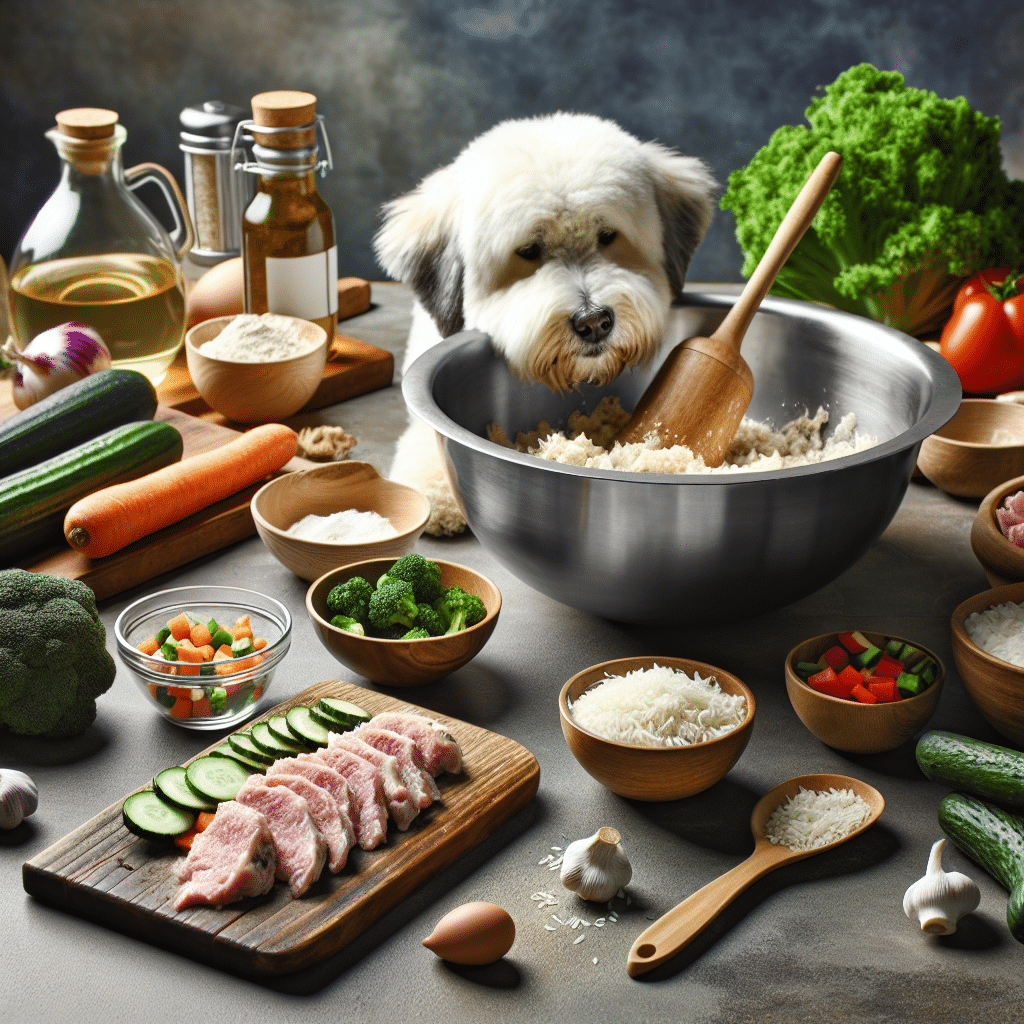Understanding Food Allergies in Dogs
Food allergies in dogs can manifest through skin irritations, gastrointestinal issues, or chronic ear infections. Common allergens include beef, chicken, dairy, wheat, soy, and corn. Veterinary diagnosis often requires an elimination diet, making homemade hypoallergenic dog food a viable option for pet owners seeking relief for their furry companions.
Identifying Symptoms of Food Allergies
Before creating a homemade hypoallergenic diet, it’s crucial to identify symptoms associated with food allergies:
- Skin Issues: Itching, redness, and rashes.
- Gastrointestinal Problems: Vomiting, diarrhea, or gas.
- Ear Infections: Frequent ear scratching or odor.
- Behavioral Changes: Increased anxiety or irritability due to discomfort.
These symptoms can lead pet owners to seek dietary adjustments. Consulting a veterinarian is recommended for proper diagnosis and guidance.
Why Go Homemade?
Over-the-counter dog foods often contain multiple ingredients, making it challenging to pinpoint allergens. Homemade dog food allows you to control every ingredient, ensuring a formulation that avoids potential allergens while providing balanced nutrition.
Key Ingredients for Hypoallergenic Dog Food
When crafting hypoallergenic dog food, consider these essential ingredients:
1. Proteins
Novel Protein Sources: Aim for uncommon protein sources, as these are less likely to trigger allergies. Options include:
- Lamb: An excellent choice for dogs sensitive to common proteins.
- Fish: Salmon or whitefish provide omega-3 fatty acids, promoting skin and coat health.
- Venison or Duck: Both are great alternatives for dogs with allergies to beef or chicken.
2. Carbohydrates
Complex carbohydrates are crucial for energy. Here are some hypoallergenic options:
- Sweet Potatoes: Rich in fiber and vitamins, sweet potatoes are gentle on the digestive system.
- Brown Rice: A good source of carbohydrates and generally well-tolerated by most dogs.
- Quinoa: Gluten-free and high in protein, quinoa is a nutritious substitute.
3. Vegetables
Vegetables provide essential vitamins and minerals. Choose easily digestible options:
- Carrots: Great for skin health and immune function.
- Pumpkin: A fantastic source of dietary fiber; supports digestion and reduces diarrhea.
- Spinach: Packed with antioxidants, spinach can boost overall health.
4. Fats
Healthy fats are essential for energy and skin health:
- Coconut Oil: Helps improve coat condition and has anti-inflammatory properties.
- Fish Oil: Rich in DHA and EPA, supporting skin and joint health.
Sample Homemade Hypoallergenic Dog Food Recipe
Salmon and Sweet Potato Stew
Ingredients:
- 2 salmon fillets (deboned)
- 1 medium sweet potato (peeled and cubed)
- 1 cup carrots (chopped)
- 1 cup spinach (chopped)
- 1 tablespoon olive oil
- 2 cups water
Instructions:
- Prepare Vegetables: In a pot, place the cubed sweet potato, chopped carrots, and spinach.
- Cook: Add 2 cups of water to the pot and bring to a boil. Cook until the sweet potatoes are tender (about 15 minutes).
- Add Salmon: Add the salmon fillets to the pot and cover. Allow to cook for an additional 10 minutes, or until the salmon flakes easily with a fork.
- Mix: Remove from heat, and let it cool. Shred the salmon into smaller pieces and mix it with the vegetables.
- Add Olive Oil: Stir in the olive oil to enhance flavor and promote healthy skin.
- Portion and Serve: Allow the mixture to cool before serving to your dog.
Tips for Maintaining a Homemade Diet
- Gradual Transition: When introducing homemade food, transition slowly over a week to avoid gastrointestinal upset.
- Balanced Nutrition: Always ensure that your homemade food is nutritionally adequate. Consulting a veterinary nutritionist can help develop a balanced meal plan.
- Monitor Reactions: Keep an eye on your dog’s health and behavior for any signs of adverse reactions as you introduce new foods.
- Portion Control: Follow guidelines for feeding based on your dog’s size and energy level to avoid overfeeding.
Incorporating Supplements
In most cases, hypoallergenic diets may lack certain vitamins and minerals. Consider adding supplements to ensure completeness:
- Probiotics: To support gut health and digestion.
- Multivitamins: To fill nutritional gaps.
Monitoring and Adjusting the Diet
Regularly revisit your dog’s condition and adjust the recipes as needed. If symptoms persist, it might indicate an intolerance to one of the ingredients. Maintain a journal to track food intake and symptoms for better insights.
Avoiding Common Mistakes
- Skipping Consultations: Always consult a veterinarian before changing your dog’s diet.
- Relying on “Hypoallergenic” Labels: Be cautious with commercial food labeled hypoallergenic. They may still contain trace amounts of common allergens.
- Ignoring Portion Sizes: Homemade food can be denser than kibble, so adjusting portions is important.
Preparing for Outings
Keeping your dog’s dietary needs in mind while traveling is essential. Pack homemade meals in portioned containers, or consider a portable food storage option. Always have water on hand to keep your dog hydrated.
Long-term Dietary Management
Managing food allergies is an ongoing process, requiring attention and flexibility. By continuously adapting your homemade hypoallergenic recipes and working closely with your veterinarian, you can help alleviate your dog’s allergies and enhance their quality of life.
Conclusion: The Benefits of Homemade Dog Food
Homemade hypoallergenic dog food provides a proactive approach to managing food sensitivities in dogs. It allows pet owners to ensure their dogs receive quality ingredients tailored to their specific needs, reducing exposure to allergens commonly found in commercial dog food. By meticulously crafting recipes with careful ingredient selection and observing your pet’s dietary reactions, you can greatly improve their health and happiness.
Final Note on Home Cooking for Pets
Creating homemade dog food is a rewarding commitment towards your dog’s health and well-being. With careful monitoring, ingredient selection, and ongoing veterinary guidance, you can create a nourishing diet that supports your dog through allergies while providing them with the love and care they deserve.
